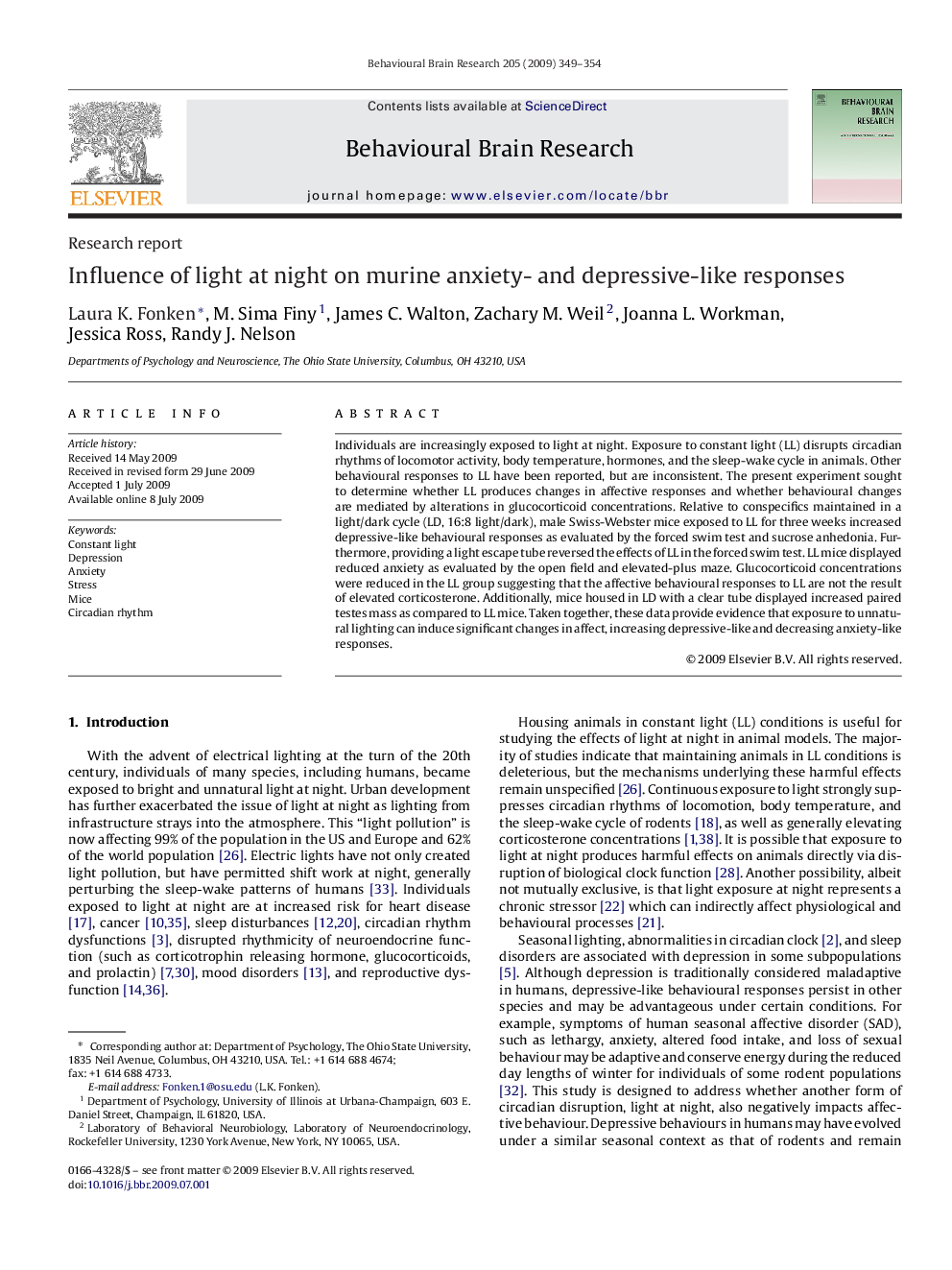| Article ID | Journal | Published Year | Pages | File Type |
|---|---|---|---|---|
| 4314403 | Behavioural Brain Research | 2009 | 6 Pages |
Individuals are increasingly exposed to light at night. Exposure to constant light (LL) disrupts circadian rhythms of locomotor activity, body temperature, hormones, and the sleep-wake cycle in animals. Other behavioural responses to LL have been reported, but are inconsistent. The present experiment sought to determine whether LL produces changes in affective responses and whether behavioural changes are mediated by alterations in glucocorticoid concentrations. Relative to conspecifics maintained in a light/dark cycle (LD, 16:8 light/dark), male Swiss-Webster mice exposed to LL for three weeks increased depressive-like behavioural responses as evaluated by the forced swim test and sucrose anhedonia. Furthermore, providing a light escape tube reversed the effects of LL in the forced swim test. LL mice displayed reduced anxiety as evaluated by the open field and elevated-plus maze. Glucocorticoid concentrations were reduced in the LL group suggesting that the affective behavioural responses to LL are not the result of elevated corticosterone. Additionally, mice housed in LD with a clear tube displayed increased paired testes mass as compared to LL mice. Taken together, these data provide evidence that exposure to unnatural lighting can induce significant changes in affect, increasing depressive-like and decreasing anxiety-like responses.
